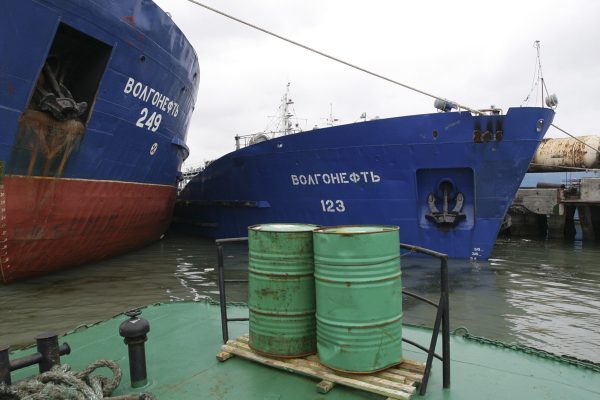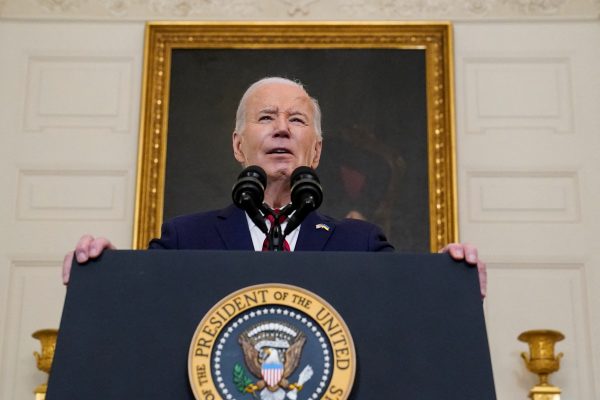After weeks of inter-party disputes, the US Congress ended the first month of 2024 without agreeing to an additional $61bn military aid package for Ukraine.
The same can be said of the EU, where Hungary blocked a $55bn aid package.
There was no matching uncertainty in the Kremlin. Putin persists, his aim unchanged — the emasculation of an independent and sovereign Ukraine.
What will the rest of 2024 bring? Here are three scenarios.
Scenario 1: Victory and security
The US Congress, or the administration, find some way to deliver additional military aid to Ukraine. Additionally, the White House decides on a strategy for military victory; that is commits to supporting Ukrainian forces in their efforts to fully regain Ukraine’s territorial integrity and sovereignty.
To this end, the US ships a significant number of critical weapons to Ukraine. Allies in the Ukraine Contact Group share the burden. Long-range missiles and an ample supply of combat aircraft are in Ukrainian hands by early summer.
By fall 2024, having learned the lessons of 2023’s failed offensive Ukraine breaks through the frontlines, reaches the Azov Sea and cuts Russia’s land bridge to Crimea. The Kerch Bridge, occupied Crimea’s lifeline to the Russian mainland, is severed by a series of attacks using German and US missiles.
By the end of the year, Ukraine needs one last push with military aid from Western partners to reach its 1991 borders. Russia no longer has the capacity to obstruct the Western Black Sea, since its navy is now largely bottled up in Novorossiysk. Ukraine has now effectively won the war in the Black Sea and its merchant ships move unimpeded.
Moldova directly benefits from Ukraine’s military victories, shielding its eastern border from any Russian menace. The rebel republic of Transnistria, illegally seized by Russia 30 years ago, begins talks on a closer relationship with the authorities in Chișinău. Romania and Bulgaria can now access substantial reserves of offshore gas in the Black Sea.
The naval power balance has shifted so much that Turkey now reconsiders a revival of Romania’s old proposal for a NATO Black Sea fleet. In the Caucasus, Russia still holds sway over Georgia and Armenia, but the Kremlin’s power is waning, leaving room for the two countries to increase their cooperation with both NATO and the EU.
Scenario 2: Stalemate
Ukraine gets just enough military assistance from the US to hold the frontline, but not to make territorial gains.
It’s a bloody and deflating year. Kyiv receives a few long-range weapons and combat aircraft by the summer. Just as in 2023, it receives 1-2 million artillery shells, whereas Russia continues to use 10 million per year.
Iran and North Korea increase shipments of weaponry and munitions, while China and Turkey continue to help Russia blow a hole in Western sanctions.
2023’s stalemate becomes the new normal. With US elections approaching, Putin doubles down as NATO members convene in Washington DC in July for the alliance’s 75th anniversary summit.
NATO invites Ukraine to become a member from January 1, 2025 — but with Article 5 applying only to the territory currently under Ukrainian control. Black Sea countries including Moldova, Romania, Bulgaria and Turkey support Ukraine’s membership, but also recognize that Ukraine’s partition is very probably the prelude to another war with Russia.
Ukrainian politics fragment, President Zelenskyy is in trouble, and the Ukrainian far-right — claiming the nation has been betrayed by its Western partners — is on the rise.
Scenario 3: A Dangerous Turn and an Uncertain Future
By spring 2024, it’s clear that things have taken a profoundly serious turn.
Congress will not agree on additional military aid for Ukraine and the US military lacks the stocks needed to send materiel through a Presidential order.
Ukraine and the US are negotiating a new lend-lease agreement, but Ukraine is running out of ammunition and there are doubts it will pass Congress.
Russia sends relentless swarms of kamikaze drones into city centers to further reduce both morale and air defense stockpiles. By late summer, the Ukrainian frontline collapses.
By October, as Americans are about to head to the polls, Russia uses its Belarusian bases to launch another attempt to seize the Ukrainian capital, Kyiv. Shortly thereafter, just as in winter 2022, Russians are poised to encircle Kyiv, while the city is under daily bombardment.
Millions of refugees are once again streaming to Ukraine’s Western borders.
Kyiv battles on in the hope that the winning US candidate will offer aid before disaster arrives. In Moscow and Brussels too, everyone keenly awaits the outcome.
Putin is already being celebrated by his propagandists as a visionary leader who stared down a much more powerful West. It seems a seminal moment in US and European history is near.
What’s the most likely outcome? Alas, the first scenario is arguably the least likely.
But 2024 is also almost certainly the last opportunity for the United States and its allies to help Ukraine wrest victory. The disastrous alternative is too stark to imagine.
Iulia-Sabina Joja PhD is a senior fellow and director of the Middle East Institute’s Black Sea Program. She teaches European security as an adjunct professor at Georgetown University. Her research and teachings focus primarily on European and Black Sea security.
Europe’s Edge is CEPA’s online journal covering critical topics on the foreign policy docket across Europe and North America. All opinions are those of the author and do not necessarily represent the position or views of the institutions they represent or the Center for European Policy Analysis.





